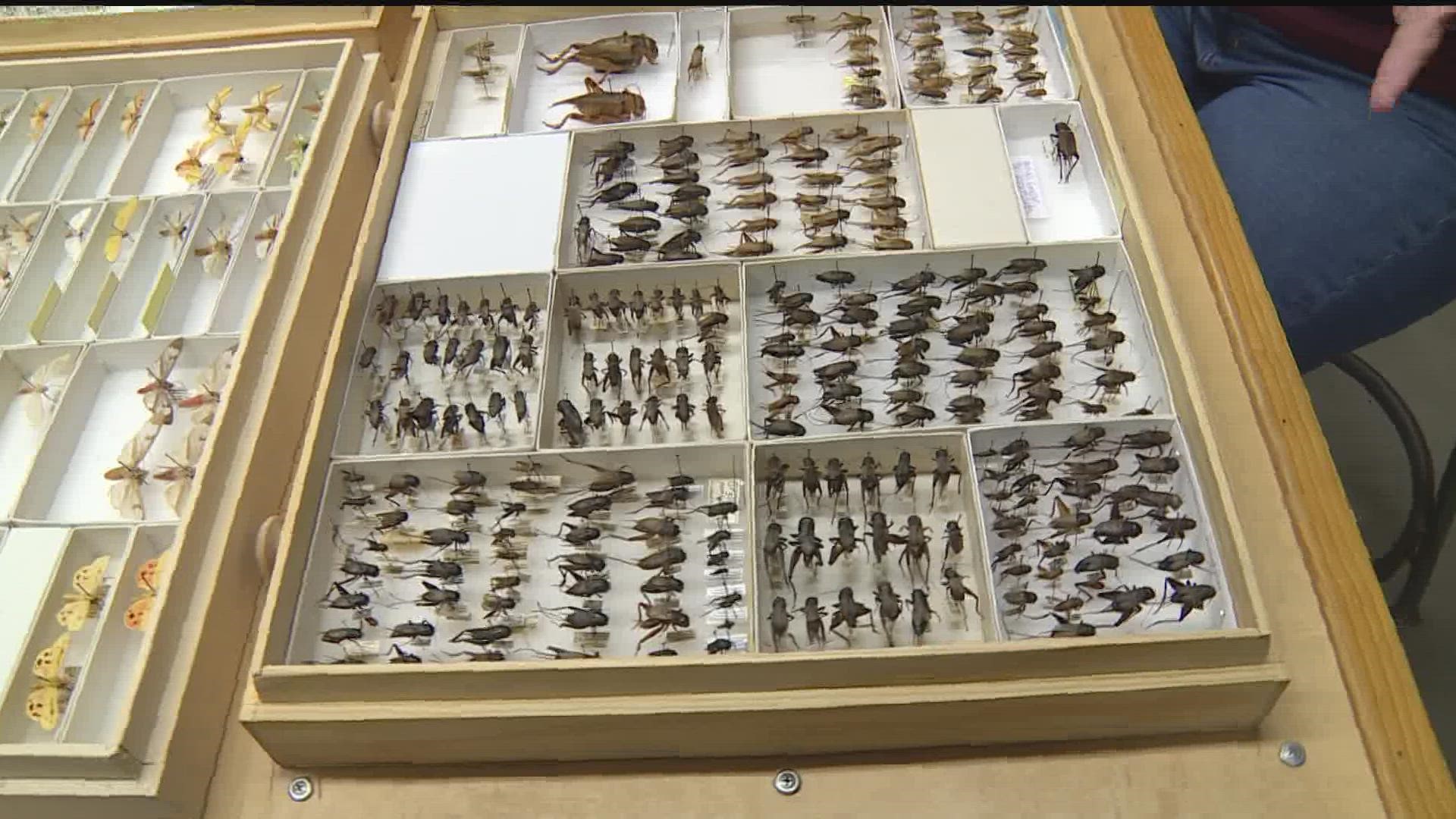SAINT PAUL, Minn. — We're still officially in summer here in Minnesota, but many Minnesotans are already reading the signs, bug signs, that we may be in for a long and harsh winter.
But can bugs really predict the weather?
"There is a lot of research on insects and weather and cold temperatures,” said Marissa Schuh.
Schuh is a bug and plant specialist with the University of Minnesota Extension. Her work revolves around integrated pest management, and she has heard all the myths and folklore about bugs predicting the weather.
"There are a lot of myths about where wasps are putting nests and how that's going to impact how bad the winter is,” Schuh said.
Apparently if you see a lot of wasp and/or hornets’ nests, that means we’re in for a bad winter.
“Folklore says the higher you’re seeing those paper wasp nests in trees, that’s how high the snow is going to be this winter,” Schuh explained.
“It’s based on this perception that wasps are like bees and the goal of the hive is to have every single wasp survive the winter. That’s not the way wasps work. Only the queen survives through the winter,” Schuh said.
So, according to Schuh and other experts, no, wasp and hornets’ nests can’t predict a harsh winter.
“There are also a lot of myths about crickets,” Schuh said.
According to folklore, if you see crickets in your basement or chimney early in the year, that means we’re in for a harsh winter.
“There’s really no truth to that. Crickets are like a lot of bugs, when the temperature gets colder at night, they need somewhere to go,” Schuh said.
There are also similar myths and folklore about spiders.
Folklore states that if you see a lot of spider webs both inside and outside of your home, that means a harsh winter is coming.
“There is also folklore about the size or distribution of the webs you’re seeing. There’s this belief that if the webs are really large that can foretell a long and colder winter. There really isn’t any scientific evidence behind that, though,” Schuh said.
The most commonly believed bug myth, however, involves the woolly bear caterpillar. These caterpillars are commonly known for their fluffy exterior that features a black band on both ends and a brown band in the middle.
"Folklore says the bigger or smaller that brown area is, the more or less likely the winter is to be severe,” Schuh said.
So, is it true? Schuh says no.
“A lot of their coloration comes down to species. There are a lot of species that look like the woolly bear caterpillar and the length of the brown band will be different depending on the species. That’s why some people may believe their brown band is getting longer or shorter depending on the weather,” Schuh explained.
“There are a lot of other factors that can affect this, including how well they have been eating that year. In a year with droughts, there is a lot of stress on the caterpillar’s bodies and that might affect their color. Also, the age of the caterpillar plays a big role. If it’s a younger caterpillar or an older caterpillar, that will affect its color.”
So, unfortunately for us here in the Midwest, many experts say bugs can’t predict the weather. However, Schuh says some species of crickets can tell you the current temperature.
“Scientists have actually tested this and discovered that you can count the number of chirps in a certain amount of time and use a specific equation and that will tell you the current temperature,” Schuh explains.
“We don’t know exactly why they do this and why it happens, but with some species of crickets, you can actually get a fairly accurate reading of the current temperature.”
Not every cricket can do this.
Schuh says most of the common types of crickets that people typically see in and around their homes cannot tell the temperature through their chirps.
“These crickets that can tell the temperature are mostly tree crickets that most people don’t see,” Schuh explains.
If you're seeing a lot of bugs in your home right now, experts say that's because the days are getting shorter, and the nights are getting colder. The bugs are looking for places to get warm, including homes and garages.
This is a surefire sign that winter is coming soon, but when it comes to predicting a bad or mild winter, experts say the bugs know just as much as we do.
Watch more local news:
Watch the latest local news from the Twin Cities in our YouTube playlist:

